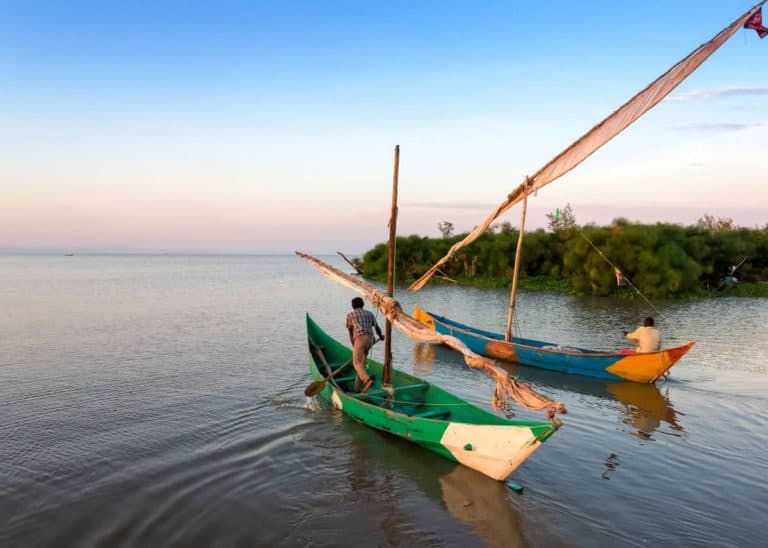7 Best Portable Water Filters & Travel Purifiers: 7 Factors Compared
If you’re traveling to rural areas abroad, you need to decide how you’ll filter your water supply. In this huge guide, you’ll learn how to choose the best portable water filter and purifier for your travels. We include factors to consider, plus common water risks, and answer commonly asked questions about water.
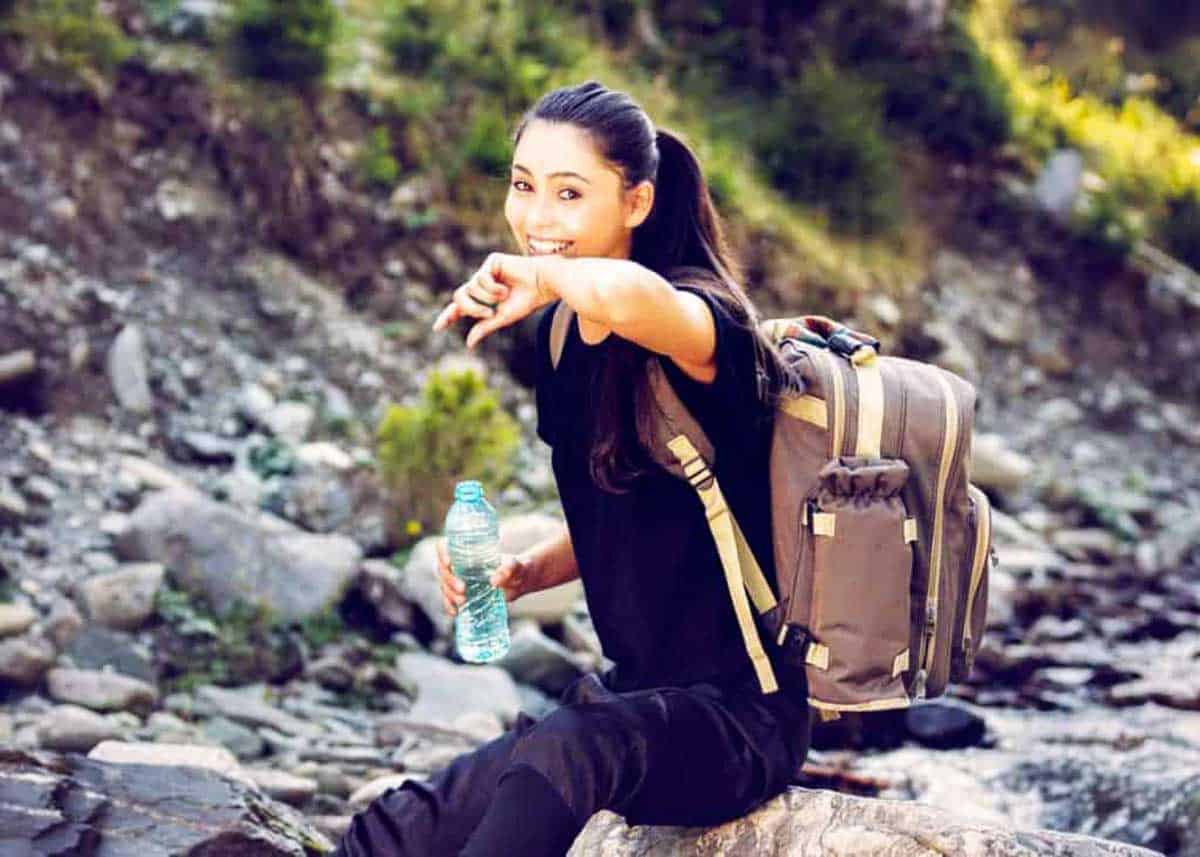
How to Choose the Best Portable Water Filter / Purifier
If you’re used to having clean, safe water at home, you might not think about the need to filter water when you travel. Uganda does not have treated water available everywhere, like you may be accustomed to in your home country.
Yes, you can buy bottled water in Uganda. But you can never be 100% sure of where bottled water comes from, and we all know how plastic is taking a negative toll on the environment. And who wants to carry that extra weight all day long?
Taking one or more portable water filters with you on your trip to Uganda can provide the perfect solution.
Not only are most portable water filters easy to use and light enough to carry in your backpack, but all of them are designed to clean water of most bacteria and parasites while many others can remove viruses, metals, and other toxins.
Your water filter is an important thing to include as you pack for your African safari.
When looking to purchase portable water filters, you will discover that they come in a wide variety, so how do you know which one is right for you?
This guide aims to help you determine just that by suggesting some of the best water filters available on the market as well as informing you about things you need to know about water filtration and purification.
What’s in this guide? You’ll learn about types of water filters and purifiers, including methods of purification. Plus, common risks of drinking untreated water. And the difference between water filters vs. water purifiers.
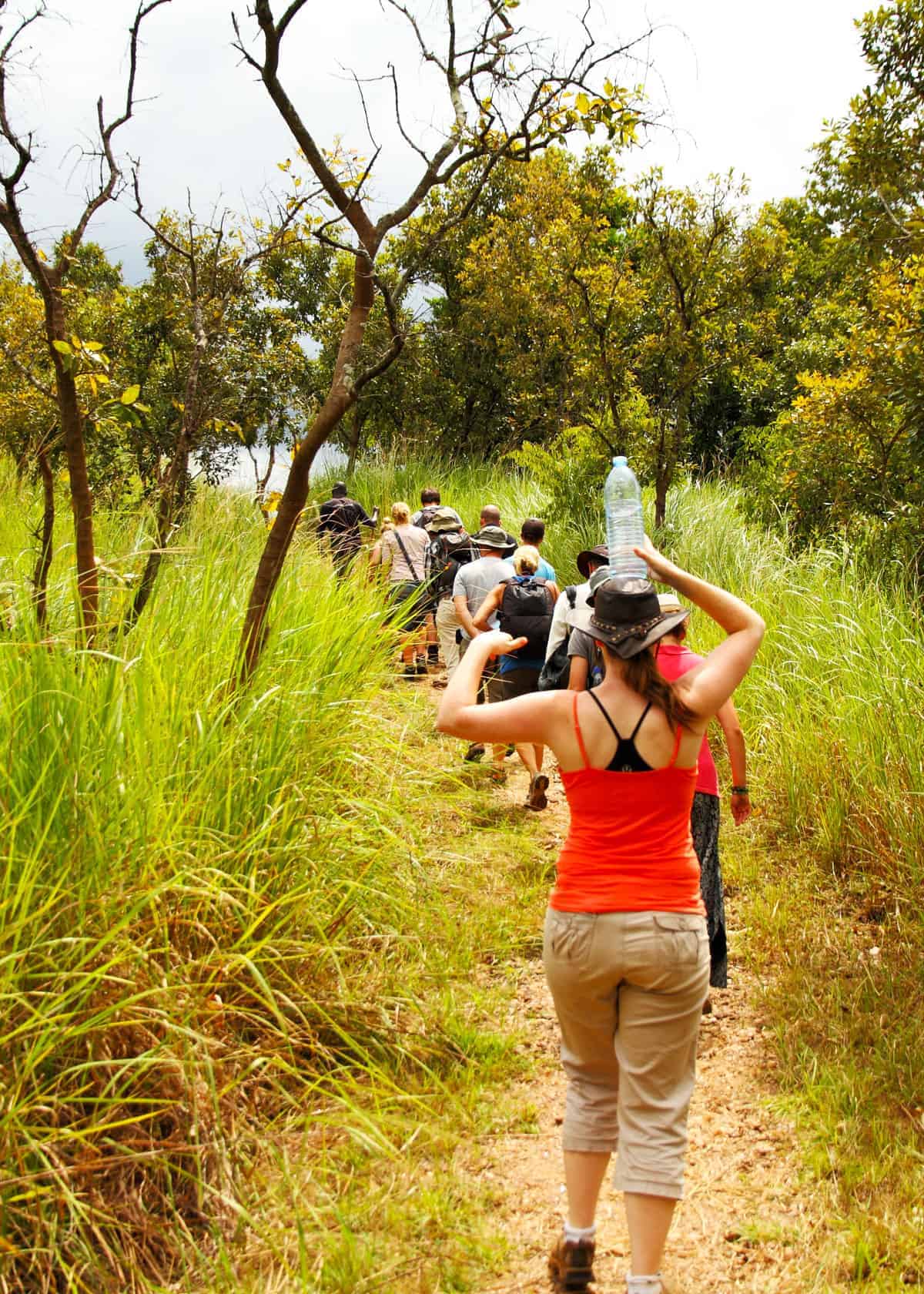
3 Top Picks: Best Portable Water Filters
1. Best for Long-lasting Life: Sawyer All-in-One
Sawyer All-in-One Water Filtration System: With the capacity to filter up to 100,000 gallons of water, the Sawyer PointOne is a good choice if you don’t want to worry about needing to replace filter cartridges frequently.
For convenience, this water filter features an adapter that can transfer your cleaned water to a drinking bottle or other receptacle.
2. Best for Family: LifeStraw Family 1.0
LifeStraw Family 1.0 Water Purifier: Easy to use, the LifeStraw Family water purifier works quickly, filtering up to 3 gallons (12 liters) of water per hour.
Get yours on Lifestraw or Amazon
This is ideal for families or large traveling groups. On top of that, this unit cleans your water of bacteria, parasites, protozoa, and viruses so that you can have peace of mind knowing you are drinking healthy water.
3. Best for Efficiency: SteriPEN Ultra
SteriPen Ultra: Using ultraviolet light rays, the SteriPEN Ultra is like a miniature bug zapper that shuts down disease-causing pests including viruses and cryptosporidium, which is often resistant to many other water treatments.
The SteriPEN is small, lightweight, simple to use, and gets the job done with little effort.
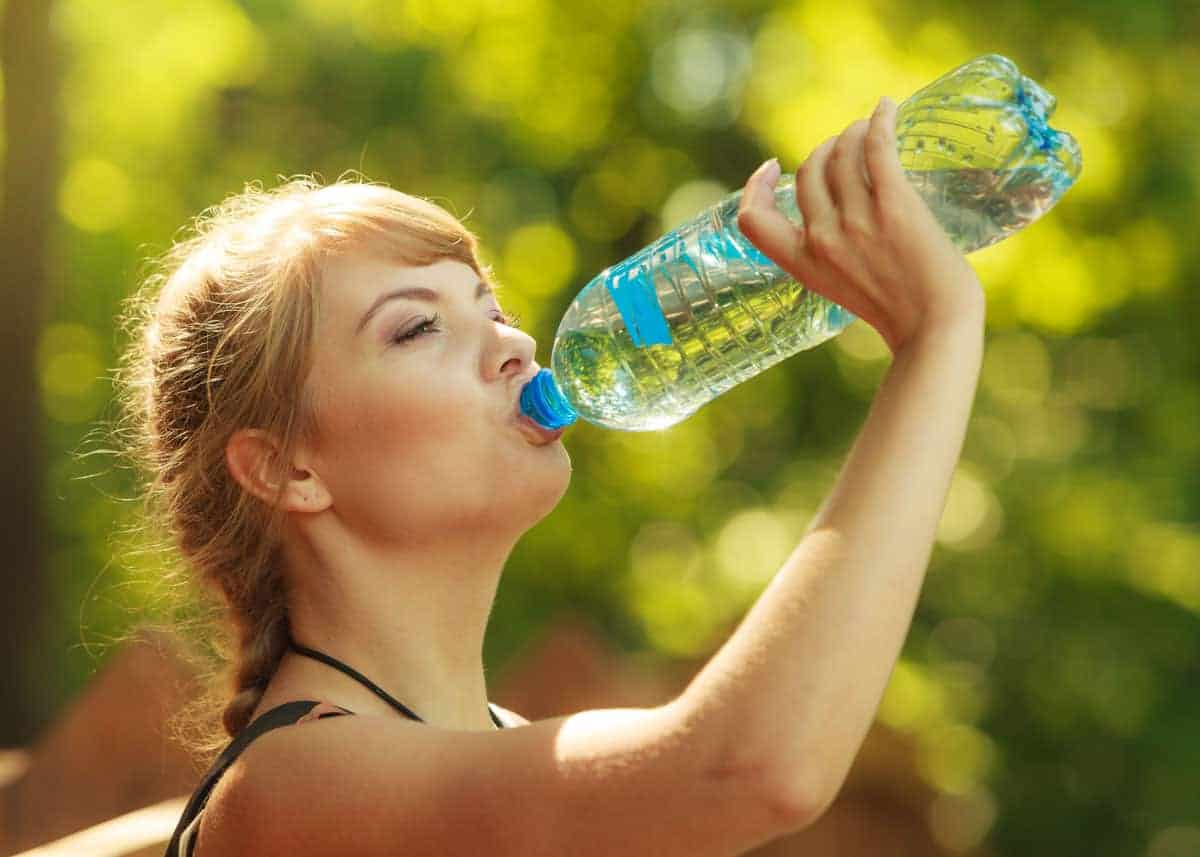
Buyers Guide: Portable Water Filters and Purifiers
7 Types of Portable Water Filters and Purifiers
Advanced technology has produced a wide variety of water filters and purifiers that perform different functions, but the following are the most common:
- Straw filters are among the lightest and easiest types of portable filtration you will find on the market. These filters may look like large, fancy straws, but there is a lot of high-tech stuff going on inside them. Straw filters feature cartridges made from layers of tightly woven fiber membranes so that your water can pass through, but bacteria, parasites, and other contaminants get trapped. How they work is as simple as drinking through a straw, except you may need to give these straw filters a little extra suction.
- Pump filters feature a pump component that requires you to force water through by hand, but many of these types are designed to work quickly so that you don’t wear out your arm. Pump filters are usually larger than other filters but still compact enough to fit in your backpack. These pump types use various filtration techniques such as fiber filters, ceramic filters, or a combination of these with an activated carbon filter.
- Bottle filters are basically water bottles with a straw filter cartridge inside them that clean up the water as you drink. You use the bottle to take in the water, and then the straw filter does its job of filtering out contaminants so that only healthy water reaches the mouthpiece. Most bottle filters use fiber filters, but some may use solid block activated carbon filters which can effectively reduce viruses, arsenic, heavy metals, and other toxins. Many bottle filters come with a removable water filter, so if you know your water is from a pure source you can remove the filter and use it as a normal water bottle, then attach the filter again when you need it.
- Gravity water filters usually consist of two containers where gravity pulls the water from one – through a filter and into the second to clean your water. Often, these containers are hanging bags with attachable hoses. Gravity filters often use a combination of activated carbon and ceramic filters or inline filters to effectively remove bacteria, viruses, parasites, and some pesticides and herbicides. Gravity water filters are usually larger than other filtration systems and feature multiple components.
- UV filters feature glass elements of ultraviolet light rays that kill bacteria when the water passes through the system. UV filters are used less because they rely on batteries, but they do have some advantages that include working quickly and improving the taste and smell of the water.
- Ceramic filters kind of work like a coffee maker. You pour water in the top which then goes through the filter and into a receptacle that has an attached spigot. These filters are heavier than other filters, but they are porous with extremely small holes (0.5 – 1-micron) that trap bacteria, parasites and other contaminants like asbestos. Some of these filters are treated with silver to prevent mold and algae growth. Many ceramic filters are used in conjunction with activated carbon filters to increase the effectiveness of eliminating many volatile organic compounds such as solvents, gasoline, and cleaning agents.
- Inline filters are the most versatile because they can be used by themselves as a straw, inside a regular water bottle, or attached to an output hose of a bucket or hydration bladder. Inline filters are also small and lightweight and have a long lifespan.
5 Methods of Purification
- Reverse Osmosis: Reverse osmosis forces water through a membrane of pores that are so small and fine that most contaminants cannot pass through. After the filtering process, the purified water is collected and safe to drink.
- Boiling: Boiling water is one of the safest, easiest, and cheapest ways to purify water. Bringing your water to a boil and allowing it to boil between 1 and 3 minutes kills harmful parasites and bacteria.
- Filtration: One of the most effective and economical methods of water purification, filtration can involve both physical and chemical processes to rid your water of dangerous contaminants. These processes include using materials that trap bacteria and active carbon that absorbs harmful compounds such as pesticides.
- Distillation: Distillation is a purification method in which clean water is collected by vaporizing it from boiling water. While this method is a slow process and requires a heat source, it is effective in removing bacteria and parasites as well as heavy metals such as mercury, arsenic and lead.
- Chlorination: This method has been used for many years in developed countries to treat water for the use of home consumption in cities because chlorine is known to be effective in killing germs and other disease-causing agents found in groundwater. However, you can also buy chlorine tablets to use for water treatment when traveling. People with some medical conditions may not be able to use chlorine tablets, so make sure you talk to your doctor beforehand.
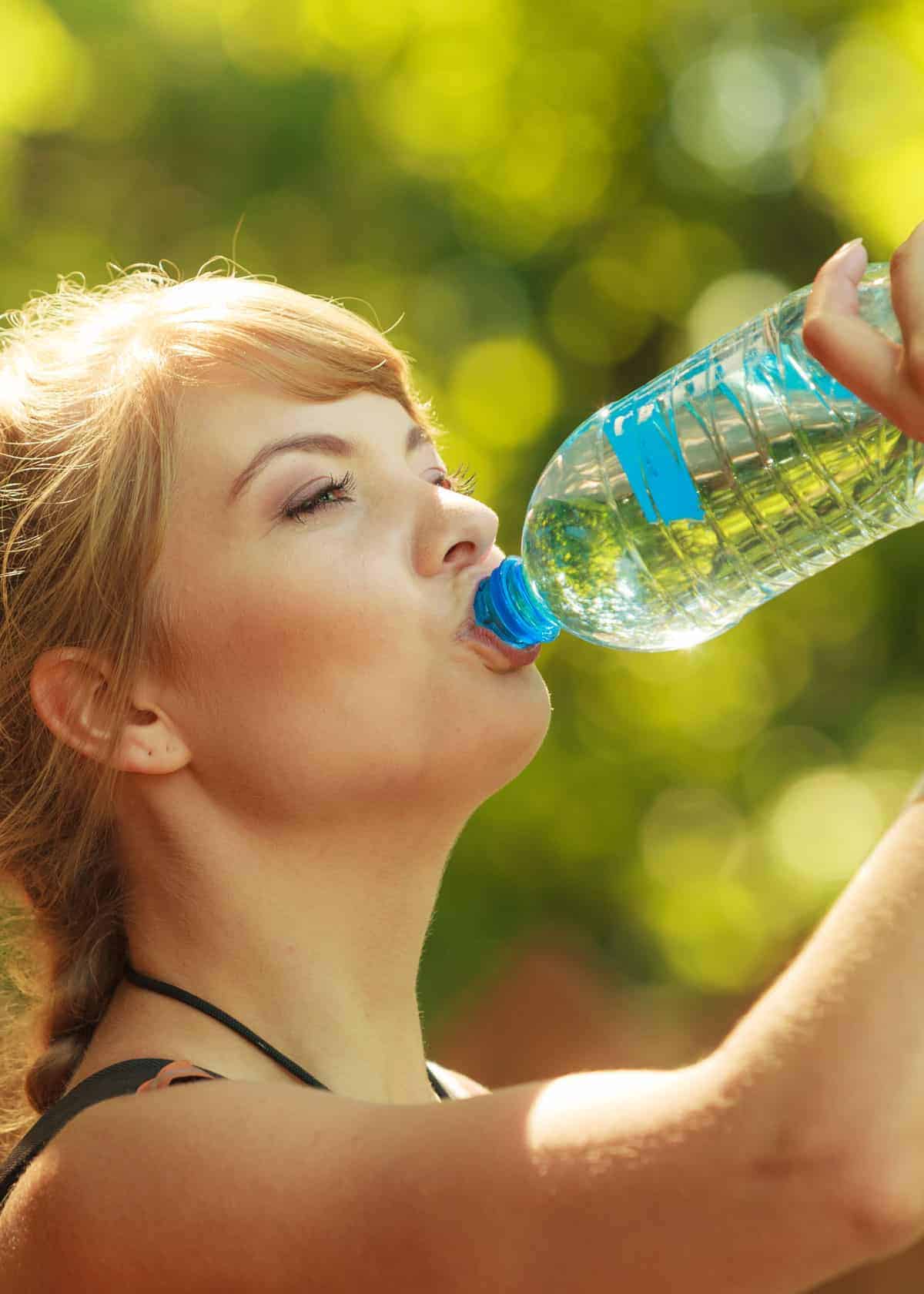
Check out our Uganda Food Guide (16 Must-Try Dishes for Your Visit)
7 Things to Consider When Buying a Portable Water Filter
- Function: What will you need your water filter to do? Will you be hiking in high-altitude mountains where the biggest water threats are bacteria and parasites? Or, will you be in an area that is largely concentrated with people and need to reduce your risk of viruses? Some water filters are not designed to kill viruses, so be sure you purchase the type of model you need.
- Weight: You probably don’t want to carry around a heavy portable water filter when you travel. Most filters are designed to be carried in your backpack, but their weight varies according to their structure, filtering technology, and components. Be sure to note the weight of each filter that interests you.
- Filtration Speed: How quickly will you need your water filtered? Each portable water filter model works at a specific rate. Some will filter a few ounces per minute while other models may produce 16 ounces per minute. Think of what your needs are to determine how much of a filtration speed you require.
- Filter Capacity: How often will you be using your portable water filter? Some models are only good for a few days or weeks while others can keep on functioning well for a longer period. Take a look at each filter and note its filter capacity. Some models can filter up to a couple of hundred gallons of water while others are equipped to clean up to 100,000 gallons of dirty water.
- Ease of Use: As you can see from this guide, not all portable water filters are created equal. Some are simple devices that get the job done quickly with little effort. Others are complex systems with components that need to be assembled and cleaned after each usage. Note whether a model requires batteries or a set-up with instructions. Consider which of these works best for your personal situation.
- Durability: Will this portable water filter hold up to elements? How likely is it to be damaged if you drop it? The durability of a water filter is determined by how it is designed and from the materials it is constructed.
- Cost: Just like all other products, portable water filters come in every size, shape, and style as well as price. Consider your budget before purchasing one. An expensive price tag doesn’t always guarantee a quality product. Some models can provide you with exactly what you need at an affordable price.
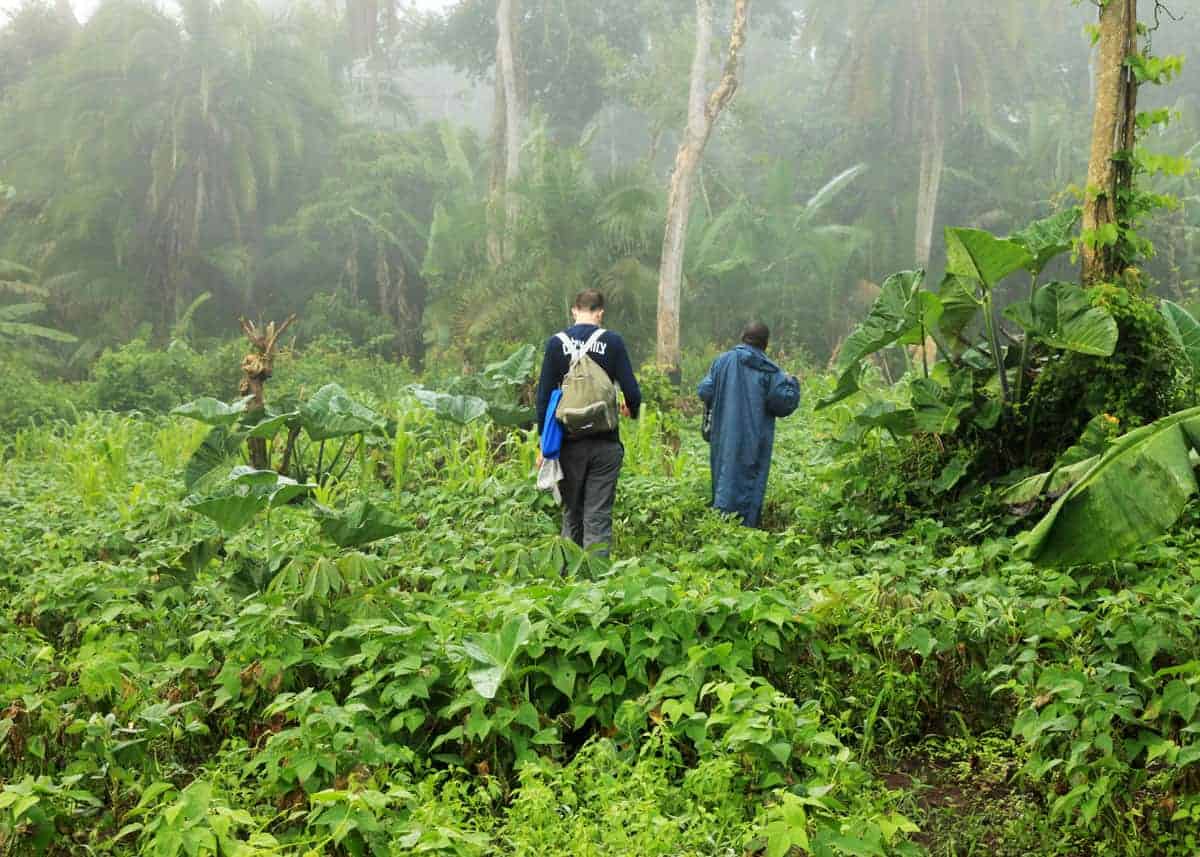
How to choose the best camera for safari
5 Common Risks for Drinking Untreated Water
Do you really need a portable water filter? You may wonder this if you are traveling from Canada or the USA where there is not that big of a problem with contaminated water.
It is important for anyone traveling to any foreign country to be aware of the possibility of sickness, disease or even death when drinking untreated water. There are always higher risks of viruses in larger populations and exposure to chemical run-off in industrialized areas.
Here are some of the most common risks you want to avoid:
- Bacteria: Bacteria from animal and human fecal waste that includes cholera, E. coli, Shigella, Salmonella, and coliform can cause serious illnesses. If you do become sick, you could die without treatment.
- Protozoa: These parasites can cause giardiasis, cyclosporiasis (known as traveler’s disease) and cryptosporidium, which are intestinal infections involving pain, severe diarrhea, nausea, vomiting, and a weakened immune system.
- Viruses: Viruses common in untreated water include hepatitis, meningitis, norovirus, polio, rotavirus, SARS, and hand-foot-and-mouth disease.
- Chemicals and heavy metals such as oil, lead, mercury, pesticides, paint, industrial run-off, and cleaning agents can also be harmful.
- Algae: There are some forms of algae blooms that can be harmful to humans.
Water Filters vs. Water Purifiers: What’s the difference?
While these seem to be very similar, there is one primary difference: virus elimination.
- Water filters are designed to filter water of bacteria, parasites, and protozoa, but not viruses since they are much smaller and can slip through the system. Some water filters can also filter out metals such as lead, iron, mercury, and copper.
- Water purifiers, on the other hand, can eliminate viruses and all the above impurities from water. Water purifiers are required by the Environmental Protection Agency to rid water 99.9% of all viruses.
Boiling water, chemical treatments, and UV light are traditional methods of purification that are able to kill viruses but not physically remove them.
That is where pump water purifiers come in handy. Not only does a pump purifier remove dead viruses from water, but sediment as well.
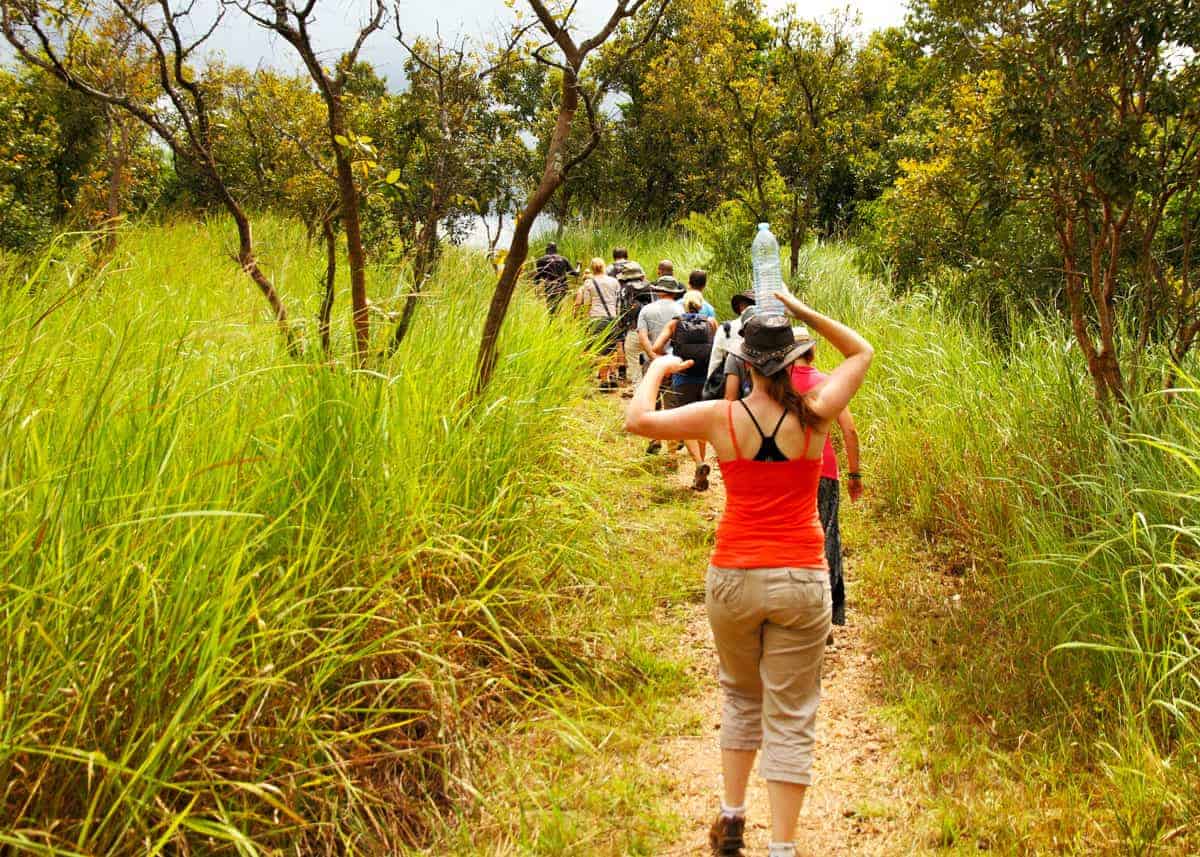
More reading: Is Uganda Safe? Guide to Water, Crime, Disease, Sun
4 More Portable Water Filters and Purifiers
Take a look at these highly-rated portable water filters to see what appeals to your needs and preferences. It is recommended that you use more than one type of water filter because no filter is perfect.
Having a mix of different types of water filters can provide you with different functions and a backup if one becomes damaged.
1. Katadyn Vario Water Filter
The Katadyn Vario water filter was designed to make things easy and efficient for you.
Weighing about 15 ounces and small enough to fit in your backpack, this water filter features a 36-inch outlet and inlet hose and plastic clip that attaches to your water bottle to prevent it from slipping while it fills with water.
Check current price on Amazon or Bass Pro Shops
The pump on this water filter works quickly, so you won’t have to throw your arm out while pumping water.
Plus, it can filter up to two quarts per minute. You will also appreciate how the charcoal in this Katadyn Vario model filters out most undesirable smells and tastes so that your water is pleasant to drink.
2. LifeStraw LSPHF017 Water Filter
Affordable and easy to use, the Lifestraw portable water filter is a best seller. Not only is it lightweight and compact (7.9 x 0.8 x 0.8 inches), but it doesn’t have a shelf life and doesn’t use chemicals to filter out toxins.
Best of all, this filter is designed to remove up to 99.9% of the protozoa and bacteria that ordinarily live in water.
The Lifestraw needs suction to get it going good for each use, but it can provide a flow rate of 57 oz. (1.7 liters) per minute.
3. LifeStraw Go Water Filter Bottle
Lightweight and handy to use, this LifeStraw Go water filter bottle is made from BPA-free plastic and features a silicone mouthpiece.
The water filter removes unpleasant smells and tastes through a two-stage carbon cartridge.
There is also a fiber membrane that filters out 99.99% of bacteria and protozoa that you find most common in water.
Check current price on Amazon or Bass Pro Shops
The filter is removable, so if you have a source of pure water you can remove it and use it as a normal water bottle.
The straw filter is designed to clean up to 264 gallons of water before it needs replacing. You will know when the filter reaches its limit because it will stop collecting water.
4. Sawyer Products Mini Water Filtration System
Small and compact enough to make it ideal for traveling, this mini filtration system is super efficient at removing most of the viruses, parasites, and bacteria that are commonly found living in the water.
Check current price on Amazon
This system comes with a versatile adapter that you can attach to a bottle, faucet, or water pouch whenever you want to improve the quality of your drinking water. You will appreciate the durability of the filter because it can clean up to 100,000 gallons of water before requiring a replacement.
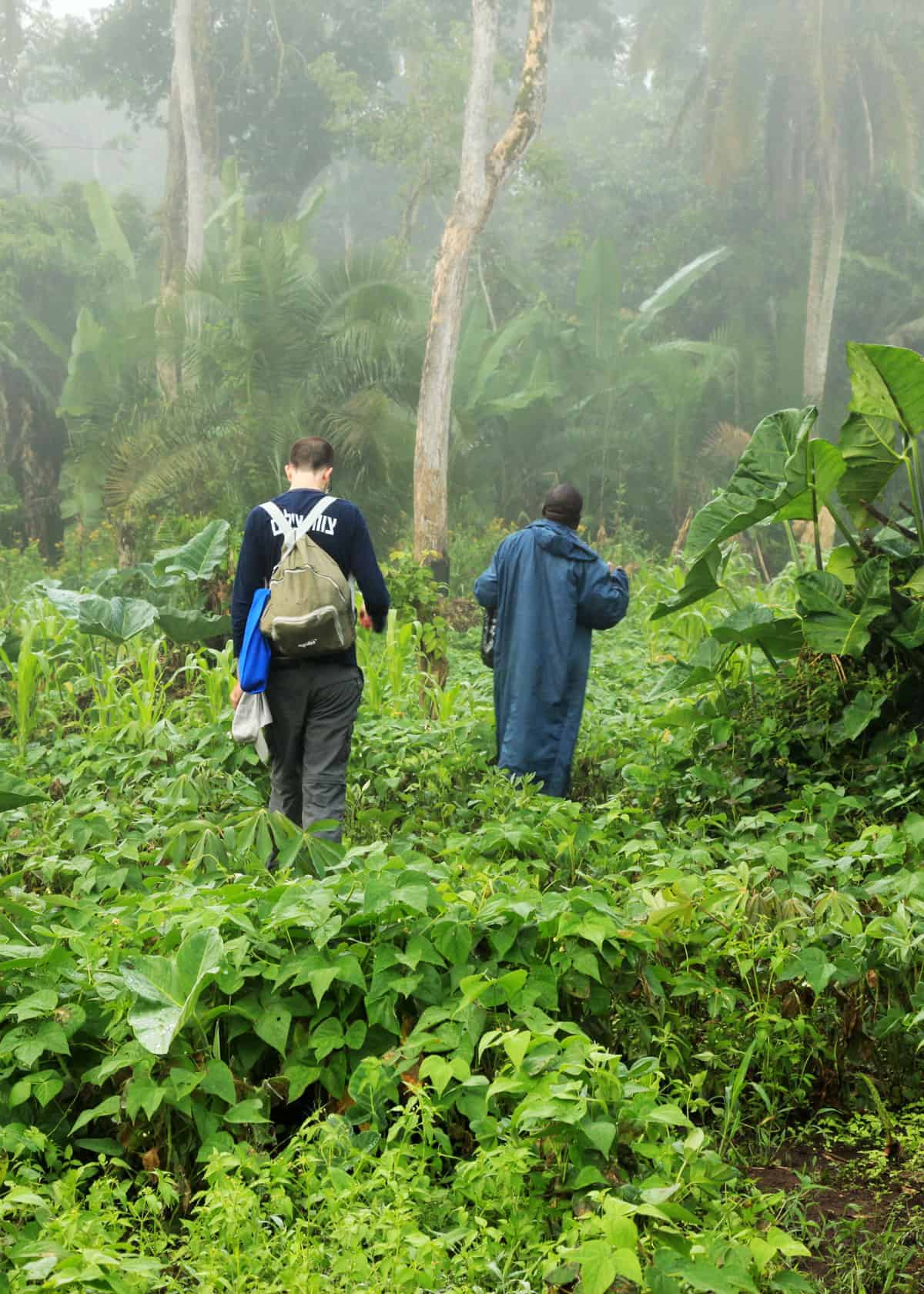
FAQs About Water Purification
1. What is potable water?
Potable water is a term used to mean water that is safe for humans to drink without presenting any health risks throughout lifetime consumption.
Potable water doesn’t mean it must taste good. It just needs to be safe for your health.
2. What do water filters remove from the water?
Depending on their design, water filters can remove bacteria and parasites that cause diseases such as E. coli, cholera, dysentery, traveler’s diarrhea, giardiasis, typhoid fever, and hepatitis.
Some water filters can also eliminate harmful chemicals and metals such as iron, lead, pesticides, and chloramines.
3. How reliable are portable water filters?
Portable water filters can be considered reliable if they meet the certification standards of NSF International, a respected organization that protects human health globally by setting guidelines for food, water, and environmental products.
A water filter that meets NSF standards should have the organization’s logo on its package.
You can expect your water filter to be reliable if you change the filter cartridge regularly and clean it according to the manufacturer’s instructions.
4. How do you care for your water filter in freezing temperatures?
Unfortunately, freezing temperatures can cause water filters to crack, which then allows toxins to slip into your drinking water. Frigid weather can also cause clogging and batteries to stop working on some filters.
The best way to protect your water filter during freezing temperatures is to keep it warm with your body heat. This means keeping it close to your body. Put the water filter in a ziplock bag and place it in your sleeping bag near you.
If temperatures are below freezing during the day and your water filter is small enough, you can place it in your pocket or tie it on a cord to hang around your neck or waist. Another option is to place a hand warmer packet on your water filter.
5. How do you know when to replace your water filter?
One of the surest ways to know when your portable water filter needs replacing is when the flow rate decreases significantly.
If you are trying to drink clean water and little is coming into your mouth, this means the filter is probably clogged with contaminants and needs replacing.
You can also note the filter capacity for how many gallons your water filter is rated and keep track of how much water you are cleaning. Another recommendation is to throw it out when it gets to within 10% of its expected lifespan.

We recommend picking up a travel insurance policy before traveling to Africa. It can cover surprise visits to a medical clinic and protect your belongings should they get lost or damaged.
Once you know what to look for, buying a water filter is not that difficult. We hope this guide has provided you with the information you need to make the best choice for you.
We want your Uganda experience to be a happy one without worrying about sickness due to unhealthy water. Traveling with a good water filter will give you peace of mind.
Travelers often boil water to make it safe for drinking. Does salt make water boil faster?
Your Turn
What type of purification system are you planning on using? Have a tip or a question? Join me in the comments below!







